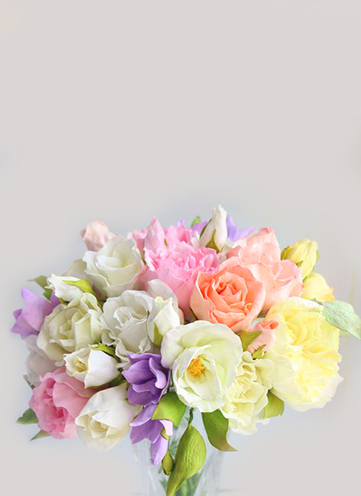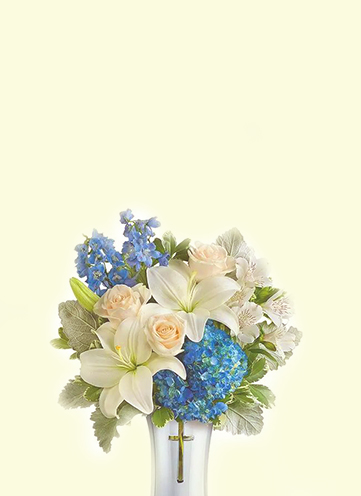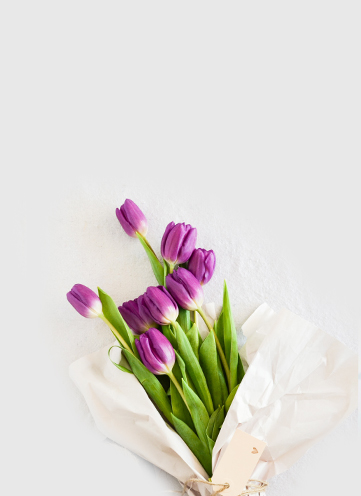Discover the Mysterious Stories Behind Tulips with These 7 Facts
Posted on 25/08/2025
Discover the Mysterious Stories Behind Tulips with These 7 Facts
Tulips are among the most beloved flowers worldwide, enchanting gardens and homes with their vibrant colors and elegant forms. Yet, beneath their beauty lies a web of fascinating histories, myths, and enigmas that many flower enthusiasts may not know. If you're intrigued by the secrets and stories of the natural world, it's time to discover the mysterious stories behind tulips with these seven incredible facts.

The Allure and Mystique of Tulips
From tulip mania to their symbolic meanings in different cultures, tulips are more than just a springtime delight. Let us peel back the petals to unveil the captivating tales and secrets that have made these flowers so irresistible for centuries.
1. Tulips Originated Far from the Netherlands
- Did you know? Despite their inextricable association with Dutch culture, tulips actually originated in Central Asia, particularly in the region that encompasses modern-day Kazakhstan, Uzbekistan, and parts of China.
- These wild tulips grew in the mountain ranges, and their beauty was first appreciated by the nomadic Turks as early as the 10th century.
- The flower's name is believed to have derived from the Turkish word for turban, "tulbend", because the shape of the tulip flower resembles the traditional headwear.
The journey of tulips to the West was a long one: During the 16th century, tulip bulbs were brought from the Ottoman Empire to Europe. Their first documented introduction to Western Europe is often attributed to botanist Carolus Clusius, who planted them at the University of Leiden in the Netherlands in the late 1500s.
2. The Infamous Tulip Mania: History's First Economic Bubble
- Discover the phenomena of Tulip Mania, an episode that defines the mysteries and economic obsessions tied to tulips.
- In the early 17th century, tulips became a symbol of wealth and luxury in Holland.
- Tulip Mania, which peaked between 1634 and 1637, saw tulip bulb prices rise to astronomical levels--sometimes costing more than a house or a year's salary for a skilled worker!
- The subsequent market crash is considered one of the world's first recorded speculative bubbles.
Stories and legends abound about people trading all their possessions for a single rare bulb, with fortunes made and lost overnight. While modern economists debate the exact impact of the crash, the mysterious story of tulip mania remains a cautionary tale about market excess and human folly.
3. Tulips and Secret Symbolism
Tulips have a language all their own. What do tulips symbolize?
- The red tulip is a declaration of deep love, often given to express true passion.
- Yellow tulips historically represented hopeless love or jealousy but in modern times symbolize cheerful thoughts and sunshine.
- White tulips are an emblem of forgiveness or purity.
- Purple tulips suggest royalty and nobility, while striped tulips once signified "beautiful eyes."
Tulips have been used for centuries to convey secret messages--a mysterious language of the petals in times when direct communication of feelings was frowned upon. This is why they still hold a special place in romantic gestures across the globe.
4. The Role of Viruses in Tulip Beauty
If you've ever marveled at the intricate "flames" and patterns on tulip petals, you may be surprised to learn that their beauty is often the result of a mysterious viral infection!
- These patterns, called "breaking," are caused by the Tulip Breaking Virus (TBV), which disrupts the pigment in the petals, creating striking streaks and mottled designs.
- During Tulip Mania, bulbs that produced these unpredictable patterns sold for the highest prices.
- However, the virus also weakens the plant, making these bulbs rare and prized--but also fragile.
The intricate role this virus played in shaping both the economic and aesthetic history of tulips only adds another layer to their mystique.
5. Tulips Have Culinary Mysteries, Too!
While we know that tulips are stunning in gardens and bouquets, did you also know they have had a unique place in culinary history?
- During World War II, when famine struck the Netherlands, people turned to tulip bulbs as a source of food. The bulbs were often ground into flour or made into soups--but beware, some varieties are toxic unless properly prepared.
- Even today, some chefs use tulip petals to garnish salads or desserts due to their vibrant colors. The petals are edible and have a mild, slightly sweet taste, but ensure they haven't been treated with pesticides before consumption.
- In Ottoman culture, tulips graced royal banquets and were sometimes candied as symbolic treats.
The secret edible life of tulips remains mostly unknown to the general public, making it a mysterious chapter in the flower's story.
6. Tulip Festivals and Elusive Varieties
Across the world, tulip festivals celebrate the arrival of spring and the enduring charm of this enigmatic flower. However, some varieties have gained almost mythical status for their rarity and unique forms.
- At festivals in places like Keukenhof Gardens in the Netherlands and Ottawa in Canada, visitors can discover thousands of cultivars, many with unique shapes and historical significance.
- Some famous varieties, such as the Semper Augustus and Viceroy, have become legendary for their scarcity and the prices they commanded during Tulip Mania. Their exact appearances are shrouded in mystery, as many original bulbs no longer exist.
- "Broken tulips," with their streaks and flames, are still sought after by collectors, despite the challenges in cultivating them safely.
This blend of rarity, festival pageantry, and elusive varieties perpetuates the fascinating allure of tulips every spring.
7. Tulips in Art, Culture, and Literature
The presence of tulips can be seen not just in gardens but woven into the tapestry of world culture and creativity.
- In Ottoman Turkey, the "Tulip Era" (early 18th century) was a time of peace and artistic flourishing named after the widespread cultivation of tulips and their appearance in textiles, tiles, and paintings.
- Tulips are recurring motifs in Dutch Golden Age still life paintings, often symbolizing the transience or vanitas of wealth and life.
- Literature, both classical and modern, abounds with references to tulips. From Persian poetry to contemporary novels, their mysterious beauty has inspired writers over centuries.
The mysterious stories of tulips in arts continue to enrich our appreciation for this beloved flower, connecting generations across continents through creativity and symbolism.

Bonus: Modern Day Mystique--Tulip Innovation and Conservation
In today's world, discovering the mysteries behind tulips isn't just about history. Ongoing research and conservation efforts aim to preserve wild tulip species and create resilient new cultivars. Hybridization projects produce ever more dazzling and mysterious colors and forms, while geneticists unlock the secrets of the patterns prized for centuries.
- Efforts by botanical gardens and conservationists are vital in protecting the genetic diversity of tulips, some of which are endangered in their native habitats.
- New discoveries in tulip genetics continue to unravel the chemical and biological mysteries behind their enchanting beauty.
- Eco-friendly cultivation is on the rise, ensuring the tulip's magic can be appreciated for generations to come.
Conclusion: Why Tulips Remain an Enduring Mystery and Marvel
Tulips are more than just ornamental flowers--they are living symbols of history, mystery, and cultural significance. From their origins in the wilds of Central Asia to their roles in economic booms, art, literature, and even survival, the stories behind tulips are as layered and colorful as the blossoms themselves.
Whether you are a gardener, a historian, or simply a lover of beauty, to discover the mysterious stories behind tulips is to embark on a journey through time and culture--led by the enduring magic of this remarkable flower. Next time you see a field of tulips or receive a delicate bloom, remember the secrets, tales, and wonders hidden within its petals.
Explore, enjoy, and let the enigmatic world of tulips inspire your mind and garden!
Latest Posts
Best Flowers for Small Gardens in [AREA]'s Unique Climate
Discover the Mysterious Stories Behind Tulips with These 7 Facts
The Ultimate Guide to Effortless Office Plant Care





